
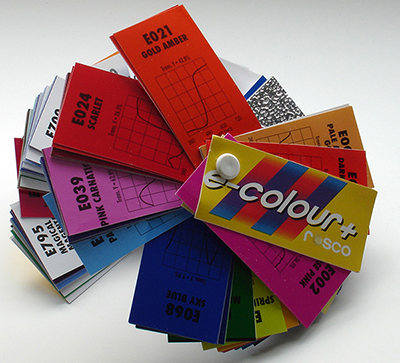
All I want for Christmas is?
Some possible stocking fillers both small and larger for the microscopy hobbyist?
compiled by David Walker with links to Micscape resources including those by his brother Ian Walker, UK
Christmas is approaching so here's a few suggestions for assorted items that my brother Ian and I have acquired over the years and that have found invaluable for various projects. They cost from a few pounds to double figure sums but all were under £60 when bought. Links to relevant articles are included.


Acetate sheeting with accompanying transmission spectra For the various lighting projects in microscopy requiring coloured filters, materials to hand even sweet wrappers may be of value. But it is useful to have a range of qood quality commercial sheets and especially as these often come with transmission spectra to put such studies on a firmer scientific footing. Those shown are the 'Lee Colour MAGIC Complementary' filter pack (image above left by Ian Walker who writes about their applications). Lee do other sets as well. Filter makers also sometimes offer free small packs of their colour swatches but some have caught on to hobbyists asking for a free set and may no longer be offered by some dealers. (Rosco above right).
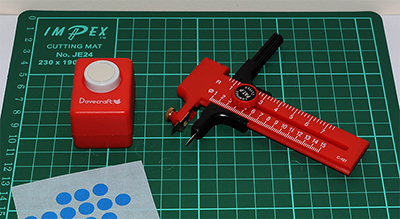
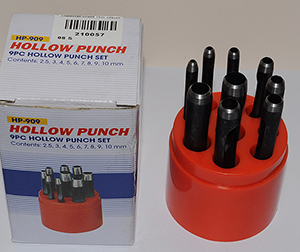
Compass cutters, cutting mats and craft knifes, hole punches Neither my brother Ian nor I are blessed with metalworking skills beyond the basics and don't have room for tools such as mini-lathes but some of the gizmos for microscopy can be fashioned neatly and effectively from card. Many of these items require card or filters cut into neat circles, annular shapes, central holes of various diameters and the compass cutter is invaluable coupled with a good quality cutting mat. A larger compass cutter than shown is available. For smaller discs or holes in a disc, good quality hollow punches are good value and far more suited than the typically poor sets of core borers available nowadays.
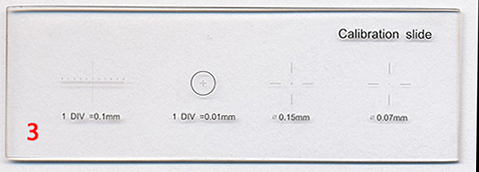
Micrometer slide All microscopy hobbyists should already have at least one micrometer slide but there are some good value / quality examples available and especially if seeking one with a cross scale in the centre which some examples don't have. These can be invaluable for detecting camera vibration in the y plane which can be missed otherwise e.g. from some mirrorless consumer digital cameras which may cock a mechanical shutter before exposure .... bad news in photomicroscopy! The example shown with both 0.1 mm x scale and 0.01 mm x-y scales was less than £10 from an Asian seller on eBay including shipping. The silver points can be useful for microscopy camera calibration. As well as for measurements they can be invaluable for assessing photomicrography setups as the dark lines in transmitted lighting will readily show chromatic aberration, pin cushion, non-planarity towards edges etc.
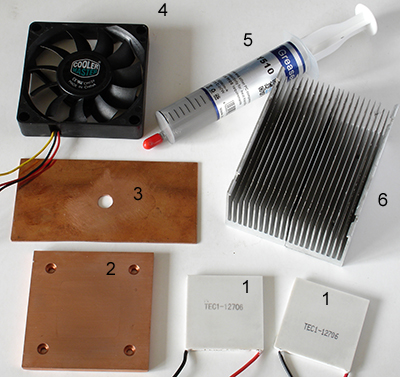
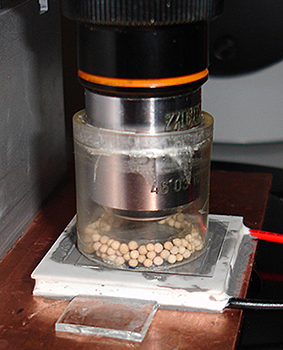
Peltier plates and assorted old CPU cooling items A recent project that have found instructive and fascinating is the use of the cheap Peltier plates available for cooling (or heating studies). My electronic knowledge is very basic but does not require anything beyond simple skills. With assorted cooling methods formerly used for older CPUs and copper plates both readily available on eBay and a benchtop power supply, various projects can be explored. The plates above were the highest wattage tried and they are suited for cooling e.g. Petri dishes with delicate organisms or gross cooling under a stereo where there is more room for cooling methods. But by trial and error have found that it is the lowest wattage plates and those available with central holes (above right with dry box to avoid condensation) that can be most suited for e.g. transmitted studies under a compound scope. Surface temperatures below -10 °C are readily achieved in a warm room. There was something very appealing studying water freezing and frost formation with indoors comfort even during one of the hottest UK summers on record.
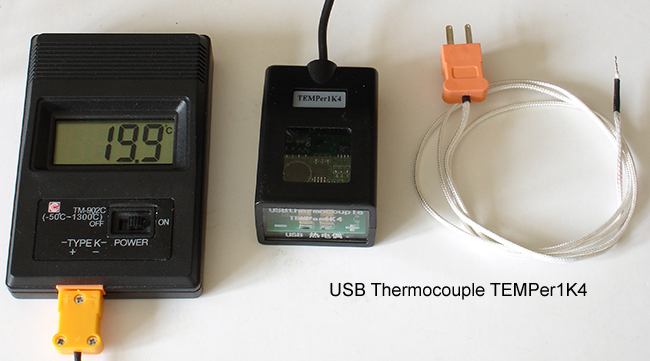
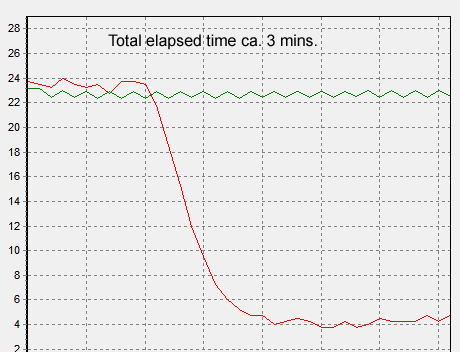
Temperature measurement with thermocouples and software For some projects, especially Peltier plate use for hot / cold stages, accurate temperature measurement and monitoring is invaluable. Thermocouples are ideally suited for attaching to flat surfaces or for use in congested spots unlike mercury or alcohol in glass thermometers. Type K thermocouples with meter are good value on eBay from Asian dealers and often less than £10 (above left). USB interfaces with thermocouple and logging software are also available to continuously monitor temperatures (right above) e.g. to assess when equilibrium temperatures are achieved and the model shown was ca. £16 (search for 'USB thermometer thermocouple' on eBay). Unfortunately this model does not monitor temperatures below zero so the fixed point meter can be swapped out. (Shown in use above right for a Peltier plate.)
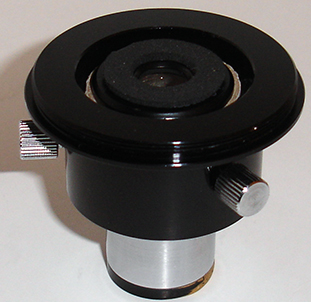
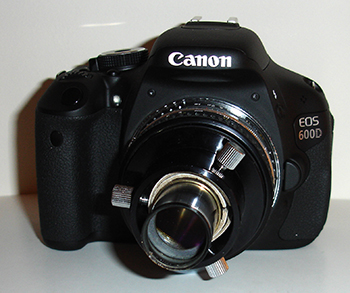
SLR lens filter thread to eyepiece tube adaptor for afocal photomicrography Like many hobbyists I've tried various methods of setting up a DSLR on a microscope to best match the field of view observed visually. For a 35 mm frame size with older microscopes this may involve some ridiculously expensive projection eyepieces for some makers where bidders are fighting for a rare item. My Canon 600D has an APS-C sensor and by far the best method have tried to date to maximise field capture uses the afocal adapter above a visual eyepiece for less than £10. It has a 52 mm filter thread for a 50 mm prime lens and a clamp for a standard microscope eyepiece tube. It is not ideal mechanically but can be successful with e.g. electronic first curtain shutter cameras such as the Canon. Despite adding another seven elements into the already optically busy Zeiss Photomic setup no aberration could be detected with a micrometer slide as test subject.
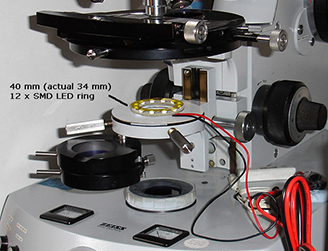
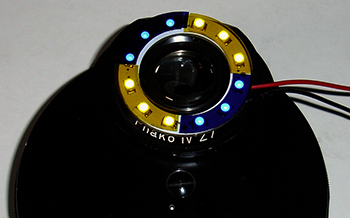
LED rings for headlights for condenserless microscopy Inspired by the published work of Dr Kevin F Webb I had great fun in 2016 exploring the use of LED rings sold for car headlights for condenserless microscopy. They especially suited models like the Zeiss Photomicroscope which I use. Condenser free brightfield, COL, darkfield and phase lighting (including colour variants) was possible. The often fiddly making of Rheinberg discs or colour phase ring modifiers became trivial as well with the compass cutters coming in handy. The LED rings in various sizes are single figure sums from outlets such as eBay and Amazon. Buying direct from Asian dealers may offer the best value and selection. (Above right shows a Rheinberg setup for low power objectives with top lens removed. The central colour is provided by a coloured filter below the condenser.)
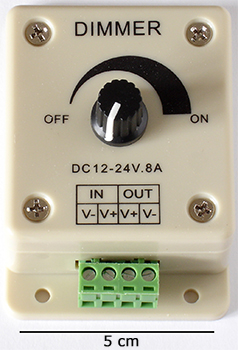
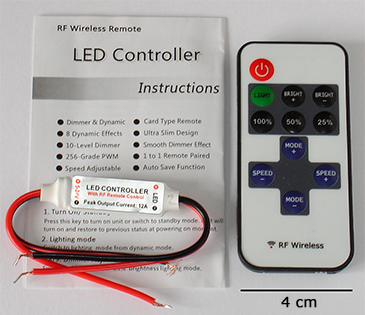
LED dimmers With the wide use of LEDs for microscopy projects there have been a wide variety of both homebrew and off-the-shelf dimmer systems shared to control them. Two have recently found useful are shown above to control the 12V string of LED rings for condenserless microscopy. They just require the common 12V 'wall-wart' PSU as a supply. But should be possible with suitable dropping resistors to control lower voltage systems. The remote control system shown right is very compact and has stroboscopic modes.
Ring light LED for stereo microscope with intensity and quadrant control After the power supply below, the second best investment we have made. With the wide availability of domestic desktop LED lamps many have been adopted for stereo lighting by hobbyists. But they can encroach on desk space and subject access. An LED ringlight is a fit and forget design with the models that can control quadrants the flat lighting noted for ringlights can be avoided. Inverted they can also serve as high quality darkfield for low power work. The 144 LED shown was bought direct from an Asian eBay seller as they can be by a large factor cheaper than some UK dealers. £57 including shipping in 2012 but not as good value as they were from a quick search.
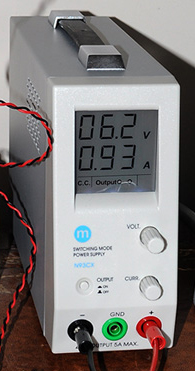

Benchtop power supply with I and V monitoring This is by far the best investment we have made over the last few years. If enjoy projects using items such as high power LEDs for brightfield, phase, darkfield and/or fluorescence studies, Peltier plates, LED ringlights etc, being able to monitor and control I/V is invaluable, both to ensure don't overload system but also to learn and monitor how the components work. On many models can set a constant current and voltage. Switched mode designs are compact to avoid using too much of the often limited bench space. The model shown is 30V 5A rating, ca. £90 new but bought used on eBay for ca. £50. This model the N93CX was from the now sadly missed Maplin but similar models should be available. Note that high wattage resistors will likely be needed with some electronics such as high power LEDs.
Comments to the author David Walker are welcomed.
Published in the December 2018 edition of Micscape.
Please report any Web problems or offer general comments to the Micscape Editor .
Micscape is the on-line monthly magazine of the Microscopy UK web site at Microscopy-UK
©
Onview.net Ltd, Microscopy-UK, and all contributors 1995
onwards. All rights reserved.
Main site is at
www.microscopy-uk.org.uk.